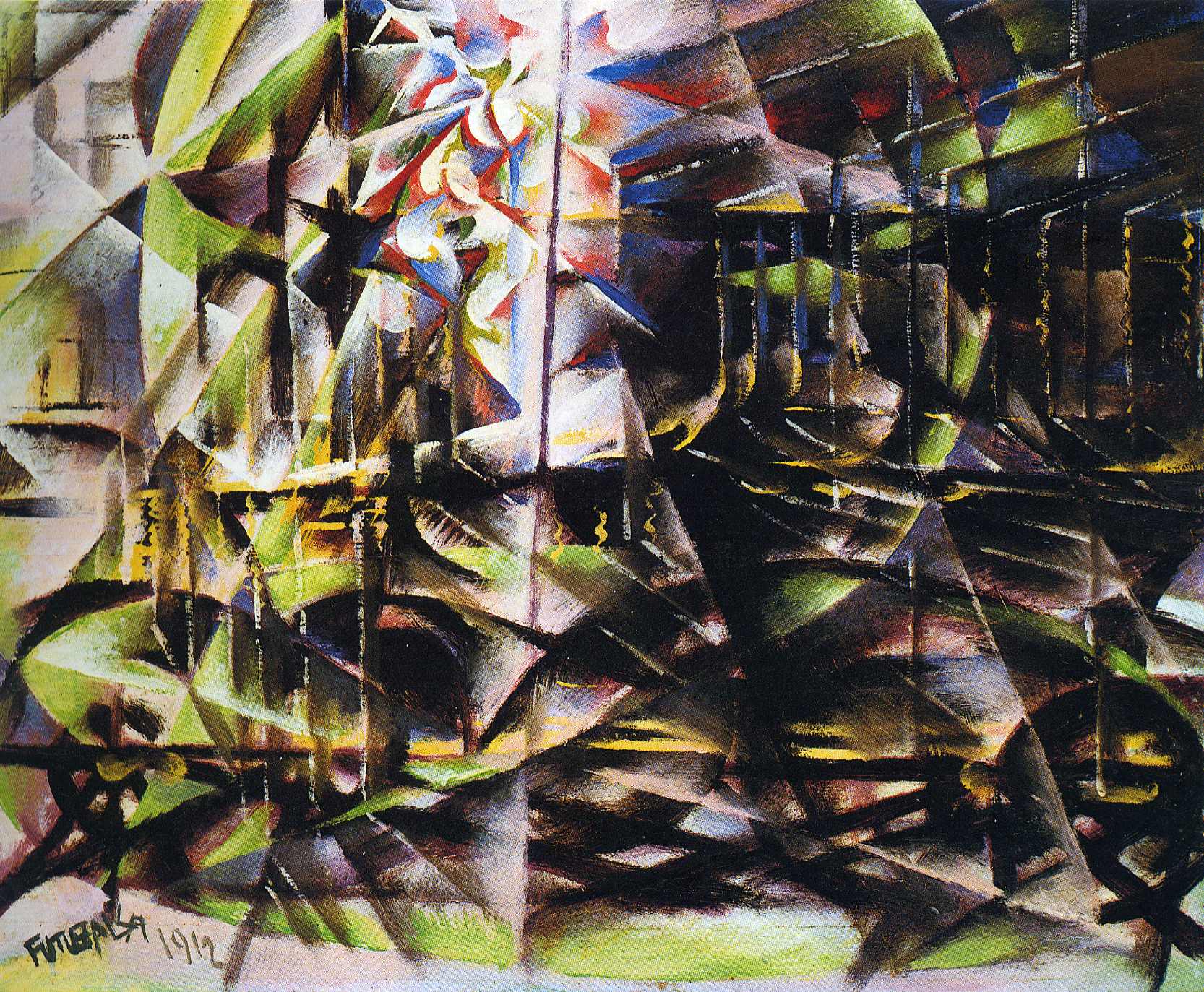Futurism was not only an art movement but also a social movement that developed in Italy in the early 20th century. Futurism was launched in 1909 and it took form in different fields of art including painting, ceramics, sculpture, graphic design, interior design, theater, film, literature, music and architecture.
This movement wanted to destroy tradtion and rejected the art and culture of the past. 'Marinetti articulated the frustration of a generation which felt itself crushed under the weight of Western artistic tradition.' [Little 2004]. The futurists wanted to make way for new and vital art.
These artists wanted to show movement in there works of art, they wanted a static thing to show movement, example Giacomo Balla's Speeding Automobile, 1912. He wanted to show the movement fources done by the car.

The painters of Futurism were particularly successful but much of the ideas of the movement were generated through writing and several manifestos of futurism were published. They worked on a lot of things, points found in their manifesto are the following:
''Manifesto of Futurism.
- We want to sing the love of danger, the habit of energy and rashness.
- The essential elements of our poetry will be courage, audacity and revolt.
- Literature has up to now magnified pensive immobility, ecstasy and slumber. We want to exalt movements of aggression, feverish sleeplessness, the double march, the perilous leap, the slap and the blow with the fist.
- We declare that the splendour of the world has been enriched by a new beauty: the beauty of speed. A racing automobile with its bonnet adorned with great tubes like serpents with explosive breath ... a roaring motor car which seems to run on machine-gun fire, is more beautiful than the Victory of Samothrace.
- We want to sing the man at the wheel, the ideal axis of which crosses the earth, itself hurled along its orbit.
- The poet must spend himself with warmth, glamour and prodigality to increase the enthusiastic fervor of the primordial elements.
- Beauty exists only in struggle. There is no masterpiece that has not an aggressive character. Poetry must be a violent assault on the forces of the unknown, to force them to bow before man.
- We are on the extreme promontory of the centuries! What is the use of looking behind at the moment when we must open the mysterious shutters of the impossible? Time and Space died yesterday. We are already living in the absolute, since we have already created eternal, omnipresent speed.
- We want to glorify war — the only cure for the world — militarism, patriotism, the destructive gesture of the anarchists, the beautiful ideas which kill, and contempt for woman.
- We want to demolish museums and libraries, fight morality, feminism and all opportunist and utilitarian cowardice.
[James Joll, Three Intellectuals in Politics]
- We will sing of the great crowds agitated by work, pleasure and revolt; the multi-coloured and polyphonic surf of revolutions in modern capitals: the nocturnal vibration of the arsenals and the workshops beneath their violent electric moons: the gluttonous railway stations devouring smoking serpents; factories suspended from the clouds by the thread of their smoke; bridges with the leap of gymnasts flung across the diabolic cutlery of sunny rivers: adventurous steamers sniffing the horizon; great-breasted locomotives, puffing on the rails like enormous steel horses with long tubes for bridle, and the gliding flight of aeroplanes whose propeller sounds like the flapping of a flag and the applause of enthusiastic crowds.''
They often broke light and colour down into a series of dots or geometric shapes. This was a process called ''Divisionism, in which forms are broken down into small pathches of colour for a sparkling effect of light or the blurring caused by high speed movement.
Futurism influenced many modern art movements of the 20th century which in turn influenced the development of graphic design. The writings, philosophies and aesthetic characteristics of futurism have been particularly influential to designers.
Futurism was a highly visible movement because futurists knew how to highly promote their work mainly from lectures to publicity stunts. In fact it was the influence of constructivism for example.
Futurists often used load and harsh colours, but they never used a theory of colours which could make them distinguished from other movements. Their interest was initially on neo-impreionism but this led to a more sustained interest in cubism.
To sum thing up Futurism was the most influential Italian avant-garde movement of the twentieth century. Artists from the futurism movement wanted to show speed, movement, machinery and violence. Futurism ended by the impact of world war two.
Biliography
Chilvers.I, 2009,Dictionary of art and artists,4th edition, New York:Oxford university Press.
DangerDom,''Disng is History'', [online] Available at :<http://www.designishistory.com/1850/futurism/> [Accessed on 10 November 2014]
F. T. Marinetti,1909,''The Futurist Manifesto'', [online], Available at :<http://vserver1.cscs.lsa.umich.edu/~crshalizi/T4PM/futurist-manifesto.html> [Accessed on 11 november 2014]
Little,S.,2004, isms understanding art,London:Herbert Press.
The Art Story Foundation,2014 ,''The art story'', [online] Available at :<http://www.theartstory.org/movement-constructivism.htm> [Accessed on 10 November 2014]
No comments:
Post a Comment